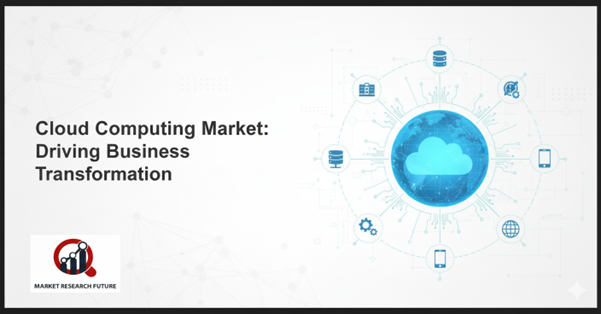Market Dynamics of cloud computing market

Cloud computing has become a cornerstone of modern business. Its ability to boost efficiency, enable hybrid work models, and provide flexible, pay-as-you-go solutions is driving rapid adoption worldwide.
Even in developing regions, companies are turning to cloud services to modernize operations, while government initiatives ensure data security and compliance. The COVID-19 pandemic further accelerated cloud adoption, as businesses shifted to remote and hybrid work models.
Digital Business Solutions in the Cloud
Cloud platforms offer businesses access to computing resources on demand. They power critical applications such as supply chain management, enterprise resource planning (ERP), and online transaction processing. For example, IBM leverages SAP S/4HANA® to manage operations across multiple countries, business units, and industries. Similarly, partnerships like Google Cloud and India’s Data Security Council (DSCI) are helping governments and businesses safely adopt cloud solutions, ensuring regulatory compliance while improving operational efficiency.
Cloud adoption enables businesses to respond quickly to market changes. It streamlines IT processes, enhances agility, and creates opportunities for engaging customer experiences. Many companies now rely on cloud solutions to bypass traditional IT bottlenecks and accelerate digital initiatives.
Hybrid and Multi-Cloud Adoption
Hybrid cloud strategies are gaining traction as businesses seek flexibility. Combining public, private, and on-premises resources allows organizations to scale efficiently while maintaining control. Microsoft’s Azure Arc, for instance, enables applications to operate seamlessly across multiple clouds, data centers, and edge environments. These solutions provide agility, faster deployment, and a competitive edge.
Remote work has also driven demand for secure cloud solutions. Providers now offer platforms that support employees, contact centers, and creative teams efficiently and safely. Zscaler’s Cloud-Native Application Protection Platform (CNAPP) exemplifies this trend, integrating multiple security tools into a single platform to simplify cloud adoption.
Opportunities and Challenges
Cloud computing helps organizations reduce costs, improve agility, and support core operations. Providers are continuously enhancing platforms, services, and analytics solutions to meet evolving business needs. However, security remains a concern. Data breaches, like the one at Flagstar Bank, highlight the risks of cloud adoption and emphasize the need for robust security protocols.
The Road Ahead
Cloud computing is reshaping business strategies and operations globally. As organizations embrace digital transformation, cloud platforms offer the tools to innovate, scale, and operate more efficiently. With continued investments in security, hybrid solutions, and advanced services, cloud computing is set to remain a critical driver of business growth in the years ahead.

Leave a Comment